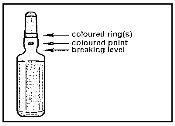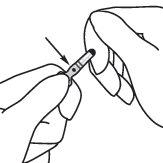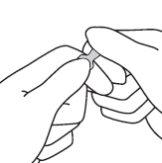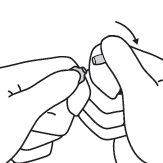
ЛИМИФЕН 0,5 мг/мл РАСТВОР ДЛЯ ИНЪЕКЦИЙ
Спросите врача о рецепте на ЛИМИФЕН 0,5 мг/мл РАСТВОР ДЛЯ ИНЪЕКЦИЙ

Инструкция по применению ЛИМИФЕН 0,5 мг/мл РАСТВОР ДЛЯ ИНЪЕКЦИЙ
Введение
Инструкция: информация для пользователя
ЛИМИФЕН 0,5 мг/мл раствор для инъекций
Альфентанил
Прочитайте внимательно всю инструкцию перед началом использования этого лекарства, поскольку она содержит важную информацию для вас.
- Сохраните эту инструкцию, поскольку вам может понадобиться прочитать ее снова.
- Если у вас есть какие-либо вопросы, проконсультируйтесь с вашим врачом или фармацевтом.
- Если вы испытываете побочные эффекты, проконсультируйтесь с вашим врачом или фармацевтом, даже если это побочные эффекты, которые не указаны в этой инструкции. См. раздел 4.
Содержание инструкции:
- Что такое ЛИМИФЕН 0,5 мг/мл раствор для инъекций и для чего он используется
- Что вам нужно знать перед началом использования ЛИМИФЕН 0,5 мг/мл раствора для инъекций
- Как использовать ЛИМИФЕН 0,5 мг/мл раствор для инъекций
- Возможные побочные эффекты
- Хранение ЛИМИФЕН 0,5 мг/мл раствора для инъекций
- Содержание упаковки и дополнительная информация
1. Что такое ЛИМИФЕН 0,5 мг/мл раствор для инъекций и для чего он используется
Что такое ЛИМИФЕН
ЛИМИФЕН содержит активное вещество «альфентанил».
Для чего используется ЛИМИФЕН
ЛИМИФЕН является лекарством, используемым для общей анестезии (делая так, чтобы пациент спал во время операции).
ЛИМИФЕН показан для использования у взрослых как:
Обезболивающее опиоидное средство в сочетании с другими лекарствами в региональной анестезии и в коротких или длительных процедурах (при необходимости вводятся повторные дозы).
ЛИМИФЕН показан для использования у детей всех возрастов, включая новорожденных, как:
Опиоидное средство в сочетании с гипнотическим средством для индукции анестезии, как обезболивающее опиоидное средство в сочетании с общей анестезией и для коротких и длительных процедур.
2. Что вам нужно знать перед началом использования ЛИМИФЕН 0,5 мг/мл раствора для инъекций
Не используйте ЛИМИФЕН:
Если у вас известная непереносимость альфентанила или других опиоидов (лекарств, имеющих подобное действие морфина)
Будьте осторожны с ЛИМИФЕН:
Сообщите вашему врачу, если у вас:
Болезни легких или проблемы с дыханием
Болезни мозга
Проблемы с щитовидной железой
Проблемы с печенью или почками
- Вы или любой член вашей семьи имели проблемы с злоупотреблением алкоголем или зависимостью от него, лекарств, выписанных по рецепту, или незаконных наркотиков («зависимость»).
- Вы курите.
- У вас были проблемы с настроением (депрессия, тревога или расстройство личности) или вы проходили лечение, назначенное психиатром, за другие психические заболевания.
Это лекарство содержит альфентанил, который является опиоидом. Повторное использование обезболивающих опиоидных средств может привести к тому, что препарат станет менее эффективным (организм привыкает к нему). Также может произойти зависимость и аддикция, что может привести к потенциально смертельной передозировке. Важно проконсультироваться с вашим врачом, если вы беспокоитесь о том, чтобы стать зависимым от ЛИМИФЕН.
ЛИМИФЕН является лекарством, используемым для общей анестезии, и должен использоваться только квалифицированными лицами с медицинскими навыками.
Сообщите вашему врачу, если вы беременны, можете стать беременной или находиться в периоде лактации (см. раздел Беременность для получения более подробной информации).
Сообщите вашему врачу или фармацевту, если вы испытываете увеличение чувствительности к боли, несмотря на прием увеличивающихся доз (гипералгезия). Ваш врач решит, нужно ли изменить дозу или прекратить прием этого лекарства.
Важно помнить, что ЛИМИФЕН может ослабить дыхание. Это также может произойти после операции. Следовательно, вам необходимо находиться под наблюдением в течение определенного периода времени после операции. Проконсультируйтесь с вашим врачом или медсестрой немедленно, если вы испытываете сильную сонливость или проблемы с дыханием.
Использование с пищей и напитками
Не следует принимать алкоголь, когда вы собираетесь использовать ЛИМИФЕН, поскольку это может усилить эффекты этого лекарства.
Если вы регулярно принимаете алкоголь, сообщите вашему врачу.
Беременность и лактация
Проконсультируйтесь с вашим врачом или фармацевтом перед приемом лекарства.
Если вы беременны или думаете, что можете быть беременной, проконсультируйтесь с вашим врачом, он решит, можете ли вы использовать ЛИМИФЕН.
ЛИМИФЕН может выделяться с грудным молоком, поэтому не рекомендуется кормить грудью в течение 24 часов после последней инъекции. Не используйте грудное молоко, которое было сцежено в течение 24 часов после последней инъекции ЛИМИФЕН.
Если женщины принимают это лекарство во время беременности, существует риск того, что новорожденный может испытать синдром абстиненции.
Вождение и использование машин
ЛИМИФЕН может снижать вашу бдительность или влиять на вашу способность управлять транспортными средствами. Рекомендуется ждать не менее 24 часов после инъекции ЛИМИФЕН, прежде чем управлять транспортными средствами или использовать опасные машины.
Всегда консультируйтесь с вашим врачом.
Информация для спортсменов
Спортсменам сообщается, что это лекарство содержит компонент, который может привести к положительному результату теста на допинг.
Депрессанты ЦНС, алкоголь и другие лекарства
Сообщите вашему врачу или фармацевту, если вы принимаете или недавно принимали другие лекарства, включая те, которые можно купить без рецепта, или травяные средства. Сообщите вашему врачу или фармацевту, если вы принимаете какие-либо из следующих лекарств, поскольку ЛИМИФЕН может повлиять на их эффективность:
Обезболивающие лекарства, влияющие на центральную нервную систему (депрессанты ЦНС), особенно бензодиазепины или связанные с ними лекарства, алкоголь и некоторые незаконные наркотики. Если вы принимаете обезболивающие или депрессанты ЦНС (например, снотворное, успокаивающие средства, лекарства для психических расстройств, алкоголь, некоторые незаконные наркотики), сообщите вашему врачу, поскольку может потребоваться снижение дозы ЛИМИФЕН. Кроме того, если вы получаете обезболивающее или другой депрессант ЦНС после приема ЛИМИФЕН во время операции, может потребоваться снижение дозы обезболивающего или других депрессантов ЦНС, чтобы снизить риск потенциально серьезных побочных эффектов, таких как затруднение дыхания или поверхностное дыхание, сильная сонливость и снижение сознания, кома и смерть. Совместное использование опиоидов и препаратов, используемых для лечения эпилепсии, боли нейрологического происхождения или тревоги (габапентин и прегабалин), увеличивает риск передозировки опиоидами и респираторной депрессии и может поставить под угрозу жизнь пациента.
Эритромицин (антибиотик), циметидин (лекарство для желудочной кислоты) или дилтиазем (лекарство, используемое для определенного типа сердечного заболевания). Эти лекарства усиливают эффекты ЛИМИФЕН; когда такие препараты вводятся, необходимая доза ЛИМИФЕН будет ниже, чем обычно.
Определенные противо-ВИЧ лекарства (например, ритонавир) или определенные противогрибковые препараты (например, флуконазол, кетоконазол, итраконазол). Может потребоваться коррекция дозы ЛИМИФЕН.
- Лекарства для депрессии, известные как ингибиторы моноаминоксидазы (ИМАО). Не рекомендуется принимать эти лекарства в течение 2 недель до или во время приема ЛИМИФЕН.
- Лекарства для депрессии, известные как селективные ингибиторы обратного захвата серотонина (СИОЗС) и ингибиторы обратного захвата серотонина и норэпинефрина (ИОЗСН). Обычно не рекомендуется принимать эти лекарства во время приема ЛИМИФЕН.
ЛИМИФЕН раствор для инъекций содержит натрий
Это лекарство содержит 0,15 ммоль (или 3,54 мг) натрия на миллилитр раствора. Если вам необходимо большое количество раствора (например, более 6,5 мл, соответствующее более 1 ммоль натрия), ваш врач будет учитывать это, если у вас есть диета с контролем натрия.
Дети и подростки
ЛИМИФЕН может вызывать затруднение дыхания и мышечную ригидность, особенно у младенцев и маленьких детей.
Когда ЛИМИФЕН вводится младенцам и маленьким детям:
Их дыхание должно быть тщательно контролируемо во время операции и в течение некоторого времени после.
Врач может ввести мышечный релаксант, чтобы предотвратить ригидность.
ЛИМИФЕН содержит натрий
Ампула 2 мл ЛИМИФЕН: это лекарство содержит менее 1 ммоль натрия (23 мг) на ампулу 2 мл, то есть практически «не содержит натрия».
Ампула 10 мл ЛИМИФЕН: это лекарство содержит 35,4 мг натрия (основной компонент столовой соли) в каждой ампуле 10 мл. Это эквивалентно 1,8% максимальной рекомендуемой суточной нормы потребления натрия для взрослого.
3. Как использовать ЛИМИФЕН 0,5 мг/мл раствор для инъекций
ЛИМИФЕН вводится в вену (внутривенно).
Количество ЛИМИФЕН зависит от вашей ситуации. Ваш врач определит, сколько ЛИМИФЕН вам нужно, исходя из вашего веса, возраста и медицинского состояния.
Использование у детей и подростков
ЛИМИФЕН используется с другими лекарствами (анестетиками или седативными средствами) у детей и подростков.
Когда ЛИМИФЕН вводится в виде инъекции с другими лекарствами, такими как анестетики или обезболивающие средства, у детей старшего возраста начальная доза обычно составляет 10-20 мкг/кг веса тела. Если необходимо, могут быть введены дополнительные инъекции по 5-10 мкг/кг веса тела.
Когда ЛИМИФЕН вводится в виде инфузии для поддержания обезболивания во время хирургической операции, обычно используются дозы 0,5-2 мкг/кг веса тела в минуту. Если инфузия ЛИМИФЕН сочетается с анестетиком, обычно используются дозы около 1 мкг/кг веса тела в минуту.
У младенцев ЛИМИФЕН может быть введен в меньших, корректированных дозах в соответствии с реакцией.
У подростков ЛИМИФЕН вводится в дозах, подобных тем, которые используются у взрослых.
Если вы примете больше ЛИМИФЕН, чем следует:
В случае маловероятной передозировки ваш врач примет необходимые меры.
Основным симптомом является затруднение дыхания.
Информация для врача в случае передозировки
Немедленные меры:
В случае гиповентилации или апноэ вводится кислород и контролируется дыхание.
Необходимо использовать специфический опиоидный антагонист для контроля респираторной депрессии. Имейте в виду, что могут потребоваться дополнительные дозы.
Другие меры:
Если мышечная ригидность сопровождает респираторную депрессию, может потребоваться внутривенный введение нейромускулярного блокатора.
Если возникает гипотония или если она сохраняется, следует подумать о возможной гиповолемии и, следовательно, о парентеральном введении жидкостей.
Пациент должен быть тщательно контролируем, и если необходимо, должны быть предоставлены соответствующие поддерживающие меры.
4. Возможные побочные эффекты
Как и все лекарства, ЛИМИФЕН может вызывать побочные эффекты, хотя не все люди испытывают их.
Очень часто: затрагивают более 1 из 10 человек
Часто: затрагивают от 1 до 10 из 100 человек
Не часто: затрагивают от 1 до 10 из 1000 человек
Редко: затрагивают от 1 до 10 из 10 000 человек
Очень редко: затрагивают менее 1 из 10 000 человек
Неизвестно: частота не может быть оценена из доступных данных
Очень редко (затрагивают менее 1 из 10 000 человек):
- Гиперчувствительность (аллергия) включая анафилактическую реакцию, анафилактоидную реакцию и крапивницу
- Дезориентация
- Потеря сознания (период после операции), судороги, миоклонус (внезапное, кратковременное и непроизвольное сокращение мышц)
- Миоз (сужение зрачков)
- Кардиоаррест
- Респираторный аррест, респираторная депрессия (медленное или недостаточное дыхание) (включая летальный исход), кашель
- Эритема (покраснение), сыпь (кожная сыпь)
- Пирексия (лихорадка)
Другие побочные эффекты, которые могут возникнуть, включают:
- Аномальное дыхание, слишком медленное или слишком слабое, или временная остановка дыхания
- спазмы дыхательных путей и гортани
- гипо
- замедленный, быстрый или нерегулярный сердечный ритм
- низкое или высокое кровяное давление
- мышечная ригидность или непроизвольные мышечные движения, включая медленные движения, ригидность или подергивания
- головокружение
- тошнота и рвота
- кардиоаррест или респираторный аррест
- озноб
- усталость
- лихорадка
- головная боль
- сонливость
- отсутствие реакции на стимулы
- потеря сознания
- судороги
- агитация
- плач
- дезориентация
- чувство благополучия или эйфории
- седация
- носовые кровотечения
- кашель
- избыток углекислого газа в крови
- нарушение зрения
- сужение зрачков
- аллергический дерматит
- зуд
- чрезмерное потоотделение
- покраснение кожи
- сыпь
Могут возникнуть другие осложнения, такие как послехирургическая агитация или дезориентация; осложнения дыхательных путей или неврологические осложнения; осложнения, связанные с анестезией или интубацией трахеи. Вы можете испытывать боль, включая боль в месте инъекции, вены или боль, связанную с процедурой.
Могут возникнуть в редких случаях тяжелые аллергические реакции и могут включать:
- отек лица, губ, рта, языка или горла
- затруднение глотания или дыхания
- кожная сыпь с зудом (крапивница)
Возможные побочные эффекты у детей и подростков
Частота, тип и тяжесть побочных эффектов у детей и подростков подобны тем, которые описаны выше, с некоторыми исключениями. У новорожденных может возникнуть часто легкая или умеренная мышечная ригидность. Реже могут возникнуть случаи тяжелой ригидности и спазмов, сопровождаемых затруднением дыхания.
Если вы считаете, что любой из побочных эффектов, которые вы испытываете, является серьезным, или если вы заметили любой побочный эффект, не упомянутый в этой инструкции, сообщите вашему врачу или фармацевту.
Сообщение о побочных эффектах
Если вы испытываете любой тип побочного эффекта, проконсультируйтесь с вашим врачом, фармацевтом или медсестрой, даже если это возможные побочные эффекты, которые не указаны в этой инструкции. Вы также можете сообщить о них напрямую через Систему фармаковигиланса лекарств для человека: https://www.notificaramRAM.es. Сообщая о побочных эффектах, вы можете внести свой вклад в предоставление более подробной информации о безопасности этого лекарства.
5. Хранение ЛИМИФЕН 0,5 мг/мл раствора для инъекций
Храните это лекарство в недоступном для детей месте.
Это лекарство не требует специальных условий хранения.
Не используйте ЛИМИФЕН после истечения срока годности, указанного на упаковке.
6. Содержание упаковки и дополнительная информация
Состав ЛИМИФЕНА0,5 мг/мл РАСТВОР ДЛЯ ВНУТРИВЕННОГО ВВЕДЕНИЯ
-ЛИМИФЕН является стерильным водным раствором, изотоническим, без консервантов, содержащим альфентанил.
Каждый миллилитр ЛИМИФЕНА содержит в качестве активного вещества 0,5 миллиграмма (мг) альфентанила (в виде гидрохлорида альфентанила).
Другие компоненты: хлорид натрия и вода для инъекций.
Внешний вид продукта и содержание упаковки
ЛИМИФЕН выпускается в упаковках по 5 ампул, содержащих 2 миллилитра или 10 миллилитров.
Владелец разрешения на маркетинг и ответственный за производство
Владелец:
Piramal Critical Care B.V.
Rouboslaan 32, 2252 TR
Voorschoten
Нидерланды
Ответственный за производство: Piramal Critical Care B.V.
Rouboslaan 32, 2252 TR
Voorschoten
Нидерланды
Вы можете запросить дополнительную информацию о этом лекарстве, обратившись к местному представителю владельца разрешения на маркетинг:
Euromed Pharma Spain S.L.
C/Eduard Maristany, 430-432
08918 Badalona
Барселона - Испания
Дата последнего обзора этого листка инструкции: Август 2022
Подробная и актуальная информация о этом лекарстве доступна на сайте Агентства по лекарственным средствам и медицинским изделиям Испании (AEMPS) http://www.aemps.gob.es/
Эта информация предназначена только для медицинских специалистов
Посология и способ введения
ЛИМИФЕН должен использоваться в виде внутривенных инъекций (при коротких операциях) или в виде дополнительных болюсов или непрерывной инфузии (при длительных операциях).
Доза ЛИМИФЕНА должна быть индивидуализирована в зависимости от возраста, веса тела, физического состояния, основного заболевания, использования других лекарств и типа хирургической операции и анестезии.
Для предотвращения брадикардии можно вводить небольшую дозу внутривенно (в/в) антихолинергического препарата непосредственно перед индукцией анестезии.
Доза для взрослых:
Использование при коротких операциях и амбулаторных пациентах
Малые дозы ЛИМИФЕНА более полезны при коротких хирургических операциях и амбулаторных пациентах, если имеется доступ к кардиопульмональному мониторингу.
Внутривенная болюсная доза 7-15 мкг/кг (1-2 мл/70 кг) обычно достаточна для операций, продолжительность которых менее 10 минут. Если продолжительность операции превышает 10 минут, вводятся дополнительные болюсы по 7-15 мкг/кг (1-2 мл/70 кг) каждые 10-15 минут или по мере необходимости.
Хотя должна быть доступна вентиляционная поддержка, в большинстве случаев следует поддерживать спонтанное дыхание с дозой 7 мкг/кг (1 мл/70 кг) или ниже, введенной медленно; с этой техникой рекомендуются болюсы по 3,5 мкг/кг (0,5 мл/70 кг).
Когда возникают постоперационные рвоты, они обычно имеют относительно короткую продолжительность и контролируются обычными мерами.
Для операций средней продолжительности
Первоначальная внутривенная болюсная доза должна быть адаптирована к ожидаемой продолжительности хирургической операции следующим образом:
Продолжительность операции (мин.) | Доза ЛИМИФЕНА в/в в болюсе | |
мкг/кг | мл/70 кг | |
10-30 30-60 >60 | 20-40 40-80 80-150 | 3-6 6-12 12-20 |
Когда хирургическая операция более длительная или агрессивная, анальгезия может быть поддержана путем:
- или дополнительных болюсов по 15 мкг/кг (2 мл/70 кг) ЛИМИФЕНА по мере необходимости (для предотвращения постоперационной респираторной депрессии не следует вводить ЛИМИФЕН в течение последних 10 минут операции);
- или инфузии ЛИМИФЕНА со скоростью 1 мкг/кг/мин (0,14 мл/70 кг/мин) до 5-10 минут до окончания операции.
Периоды болезненных стимулов можно контролировать путем дополнительных небольших доз или увеличения скорости инфузии.
Могут быть использованы более низкие дозы ЛИМИФЕНА, когда анестезия дополняется другими агентами.
Когда ЛИМИФЕН используется без Н2О/О2 или без другого ингаляционного анестетика, требуется более высокая поддерживающая доза ЛИМИФЕНА.
Для более длительных хирургических операций
ЛИМИФЕН может быть использован в качестве анальгетического компонента анестезии во время длительных хирургических операций, особенно когда требуется быстрая экстубация. Вводя индивидуально адаптированную начальную дозу и корректируя скорость инфузии в зависимости от тяжести хирургического стимула и реакции пациента, можно поддерживать оптимальную анальгезию и стабильную функцию автономной нервной системы.
Особые группы населения
Педиатрическое население
Должен быть доступен аппарат вентиляционной поддержки для использования у детей любого возраста, даже для коротких операций у детей с спонтанным дыханием.
Данные о детях, особенно тех, кто находится в возрасте от 1 месяца до 1 года, ограничены (см. раздел 5.2).
- Новорожденные (от 0 до 27 дней): Фармакокинетика очень вариабельна у новорожденных, особенно у преждевременно родившихся. Клиренс и связывание с белками ниже, и может быть необходима меньшая доза ЛИМИФЕНА. Новорожденные должны быть密но отслежены, и доза ЛИМИФЕНА должна быть корректирована в зависимости от реакции.
- Младенцы и дети (от 28 дней до 23 месяцев): Клиренс может быть выше у младенцев и детей по сравнению со взрослыми. Может быть необходимо увеличить скорость инфузии ЛИМИФЕНА для поддержания анальгезии.
- Дети (от 2 до 11 лет): Клиренс может быть немного выше у детей и может быть необходимо увеличение скорости инфузии.
- Подростки: Фармакокинетика альфентанила у подростков аналогична таковой у взрослых, и не требуются специальные рекомендации по дозировке.
Рекомендации по дозировке для педиатрических пациентов
Широкая вариабельность реакции на ЛИМИФЕН затрудняет предоставление рекомендаций по дозировке для детей младшего возраста. Для старших детей считается подходящей болюсная доза 10-20 мкг/кг ЛИМИФЕНА для индукции анестезии (например, для дополнения пропофола или ингаляционной анестезии) или в качестве анальгетика. ЛИМИФЕН можно вводить в дополнительных болюсах по 5-10 мкг/кг с подходящими интервалами.
Для поддержания анестезии у детей во время операции можно вводить ЛИМИФЕН со скоростью 0,5-2 мкг/кг/мин. Доза должна быть корректирована в зависимости от потребностей каждого пациента. Когда ЛИМИФЕН сочетается с внутривенным анестетиком, рекомендуемая доза составляет примерно 1 мкг/кг/мин.
Может быть повышенный риск респираторных осложнений и мышечной ригидности, когда ЛИМИФЕН вводится новорожденным и маленьким детям по сравнению со старшими детьми и взрослыми. По этой причине педиатрические пациенты младшего возраста должны быть отслежены сразу после введения ЛИМИФЕНА. Должен быть доступен аппарат вентиляционной поддержки для использования у детей любого возраста, даже для коротких операций у детей с спонтанным дыханием.
Если ЛИМИФЕН используется у новорожденных и младенцев, следует рассмотреть использование миорелаксанта из-за риска мышечной ригидности. Все дети должны быть отслежены в течение достаточного периода времени после окончания лечения ЛИМИФЕНом, чтобы обеспечить возвращение к спонтанному дыханию.
У новорожденных может быть необходима меньшая доза ЛИМИФЕНА из-за вариабельности фармакокинетики.
Новорожденные должны быть密но отслежены, и доза ЛИМИФЕНА должна быть корректирована в зависимости от реакции.
Инструкции по правильному введению препарата
Если желательно, ЛИМИФЕН можно смешать с внутривенными инфузиями хлорида натрия или глюкозы. Такие разбавления совместимы с пластиковыми наборами для инфузии. Они должны быть использованы в течение 24 часов после приготовления.
Храните это лекарство в недоступном для детей месте.
Используйте перчатки при открытии и/или обращении с ампулой.
Случайное кожное воздействие следует лечить промыванием пораженной области водой. Избегайте использования мыла, алкоголя и других средств для очистки, которые могут вызвать химические или физические повреждения кожи.
- Держите ампулу между большим и указательным пальцами, оставив свободным кончик ампулы.
- Другой рукой возьмите кончик ампулы, положив указательный палец на горлышко ампулы и большой палец на окрашенную точку параллельно цветным кольцам идентификации.
- Держа большой палец в этом положении, сломайте кончик ампулы, крепко держа другую часть ампулы в руке.






- Страна регистрации
- Наличие в аптекахПроблемы с поставками
- Активное вещество
- Требуется рецептДа
- Производитель
- Информация носит справочный характер и не является медицинской рекомендацией. Перед приемом любых препаратов проконсультируйтесь с врачом. Oladoctor не несет ответственности за медицинские решения, принятые на основе этого контента.
- Аналоги ЛИМИФЕН 0,5 мг/мл РАСТВОР ДЛЯ ИНЪЕКЦИЙФорма выпуска: СУБЛИНГВАЛЬНАЯ ТАБЛЕТКА, 30 МИКРОГРАММАктивное вещество: sufentanilПроизводитель: Laboratoire AguettantТребуется рецептФорма выпуска: ИНЪЕКЦИОННЫЙ РАСТВОР, 0,0785 мг/млАктивное вещество: фентанилПроизводитель: Kern Pharma S.L.Требуется рецептФорма выпуска: ИНЪЕКЦИОННЫЙ РАСТВОР, 50 микрограммАктивное вещество: фентанилПроизводитель: Laboratorios Basi Industria Farmaceutica S.A.Требуется рецепт
Врачи онлайн по ЛИМИФЕН 0,5 мг/мл РАСТВОР ДЛЯ ИНЪЕКЦИЙ
Консультация по дозировке, побочным эффектам, взаимодействиям, противопоказаниям и продлению рецепта на ЛИМИФЕН 0,5 мг/мл РАСТВОР ДЛЯ ИНЪЕКЦИЙ – по решению врача и с учетом местных правил.














